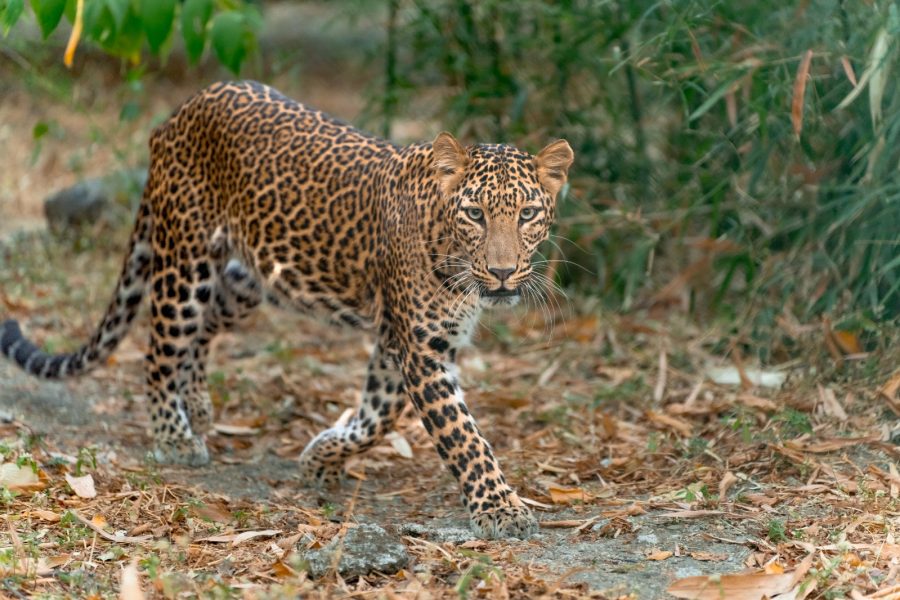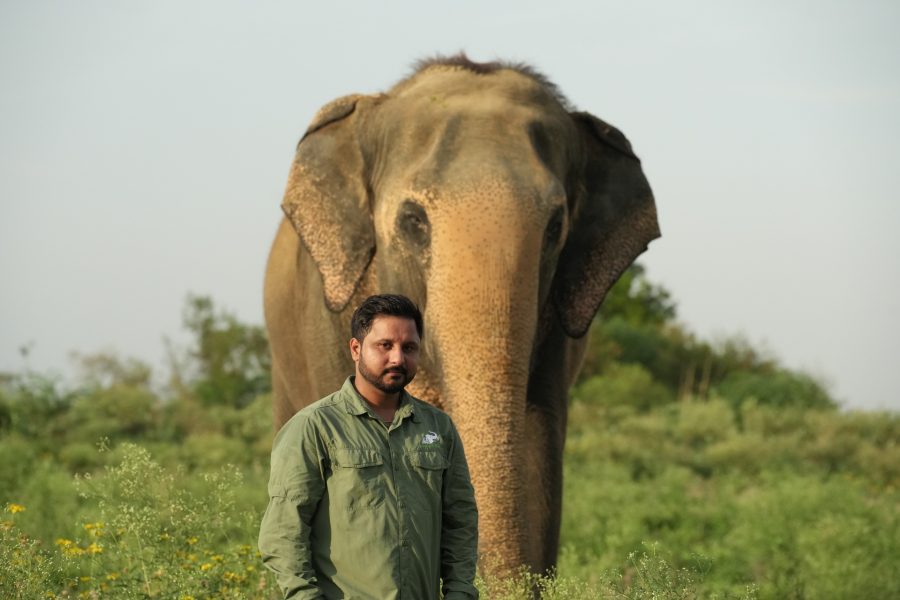Roads cannot signify progress if they claim lives or are life-threatening. A leopard was recently hit by a speeding vehicle on the Nagar-Kalyan highway (NH-61) near Ale village located in Junnar, Maharashtra. Concerned passers-by who spotted the big cat lying unconscious on the road informed the Maharashtra Forest Department. A 5-member team of rescuers from Wildlife SOS also rushed to the spot to provide urgent medical treatment.
As the night grew, so did the number of onlookers. The gathering crowd was brought under control by the forest officials in a systematic manner. This enabled the team to safely transfer the grievously injured leopard to the nearest forest department nursery, where Wildlife SOS veterinarians carried out on-site examination and emergency treatment.
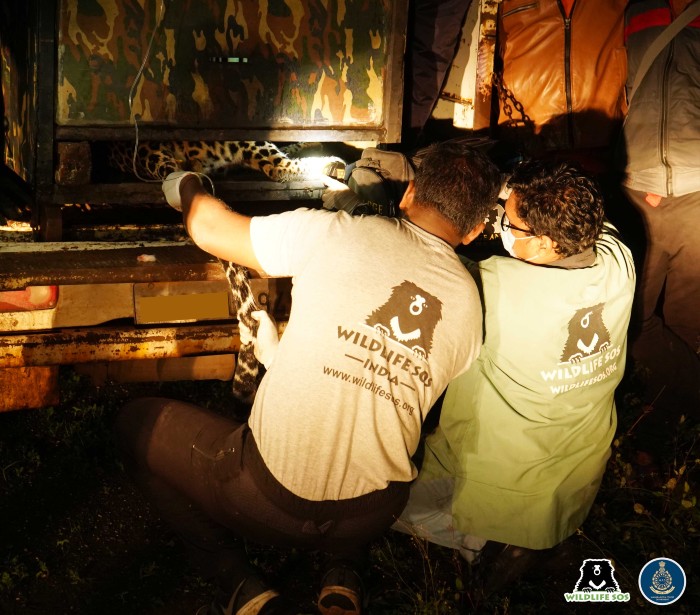
Upon inspection, the leopard was identified as a male, approximately 4-5 years old. The feline was provided with fluid therapy and antibiotics, and later, was transferred to the Manikdoh Leopard Rescue Centre (MLRC). According to Dr. Nikhil Bangar, Veterinary Officer, Wildlife SOS, initial diagnosis revealed the leopard to be paralysed below the neck. This was attributed to nerve damage. However, the leopard has shown slight improvement since he was found and is able to move his right hind limb and tail.
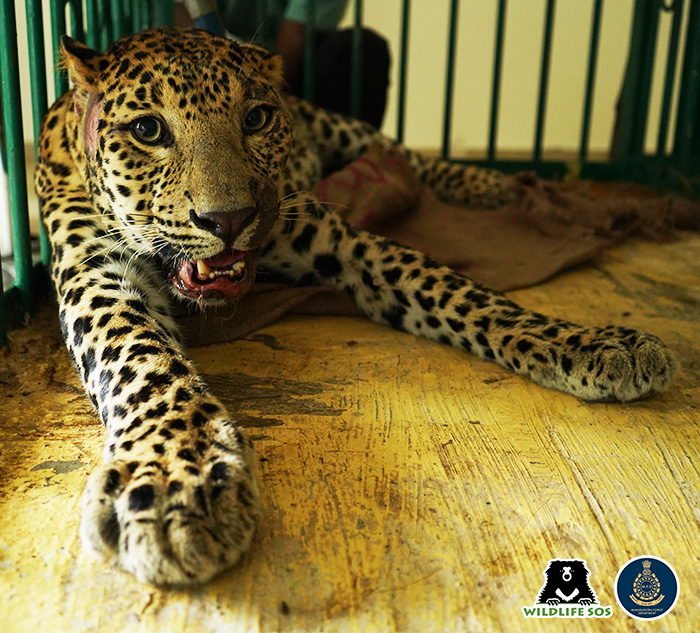
The veterinary team performed an X-ray to look for any potential fractures from the collision and is providing regular massages to the leopard. Before going into further detailed diagnosis, they are assessing the feline’s response to the first treatment protocol. If the animal does not respond to the first treatment, the team would need to resort to advanced diagnostic measures. For the time being, the leopard will be kept at MLRC under intensive care till he recovers.
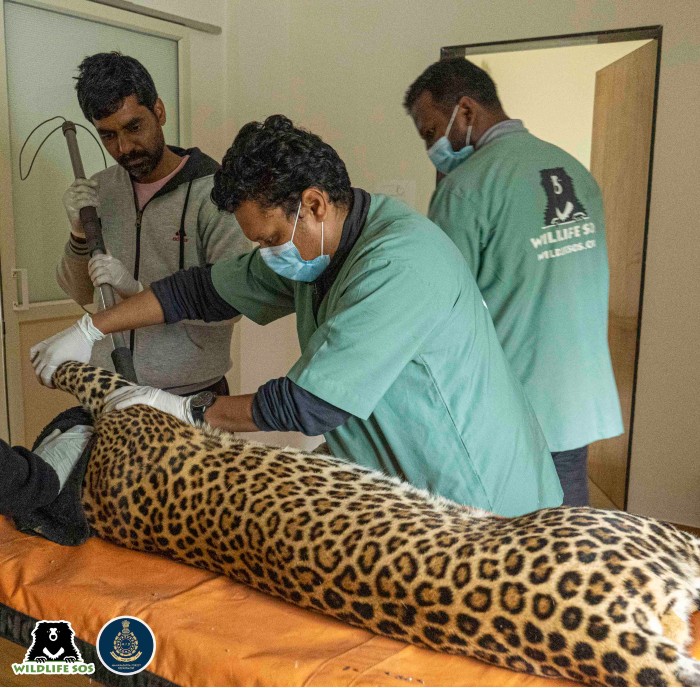
Last month, Wildlife SOS rescued a Striped hyena from a similar road accident involving a speeding vehicle on the Pune-Nashik highway in Manchar Forest Range. The hyena had suffered a mandibular symphysis fracture (fracture in the jaw) for which our team performed a surgery on its lower jaw.
Such road accidents are becoming a common occurrence across Maharashtra. These roads are linear infrastructures that cut through natural habitats and lead to rampant habitat fragmentation. Dr. Bangar also explains how during the monsoons, heavy rains reduce the visibility of drivers which can have a devastating impact on wildlife, especially on nocturnal animals like leopards and hyenas.
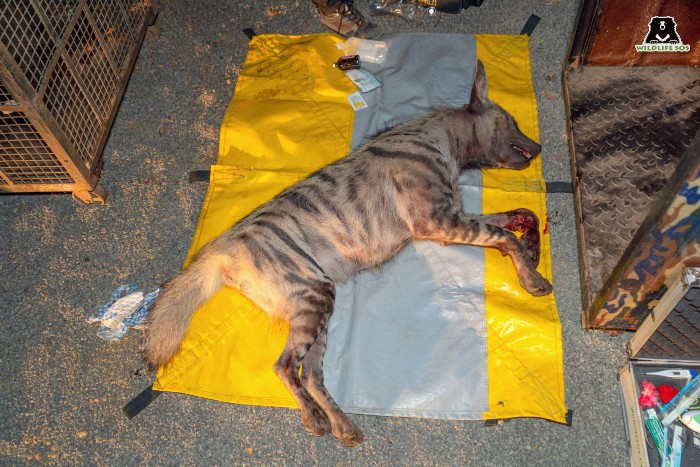
The Maharashtra Forest Department has been considering options to make sure lives of wild animals are not lost while crossing highways. These include building underpasses to assist wild animals cross the dangerous highways, covering the sides of the highways and erecting speed limit banners along with cautionary sign boards to indicate the presence of wildlife.
When an incident like this occurs in a remote area with very little human presence, it poses a threat to the animal’s life. This is due to the delay of this information reaching the rescue agency and as a result, crucial time to ensure the animal’s survival is lost. Usually in such situations, our veterinary team initiates emergency on-site treatment by taking the animal to the nearest forest nursery.
In this case too, the leopard was immediately shifted to the nearest forest nursery to start emergency treatment. Wildlife SOS has previously rescued a leopard which was left paralysed after a highway accident, but with diligent diagnosis and treatment, we helped the leopard get back on its legs.
People too can take precautionary measures when on the move, first by driving carefully. Following basic steps such as keeping the headlights on while driving at night, and asking your co-passenger to be vigilant, can be helpful. Looking out for sign boards which suggest the presence of wild animals, and slowing down the car’s speed can save a life. Another way to help is to become a monthly donor and support rescue operations done by Wildlife SOS.


